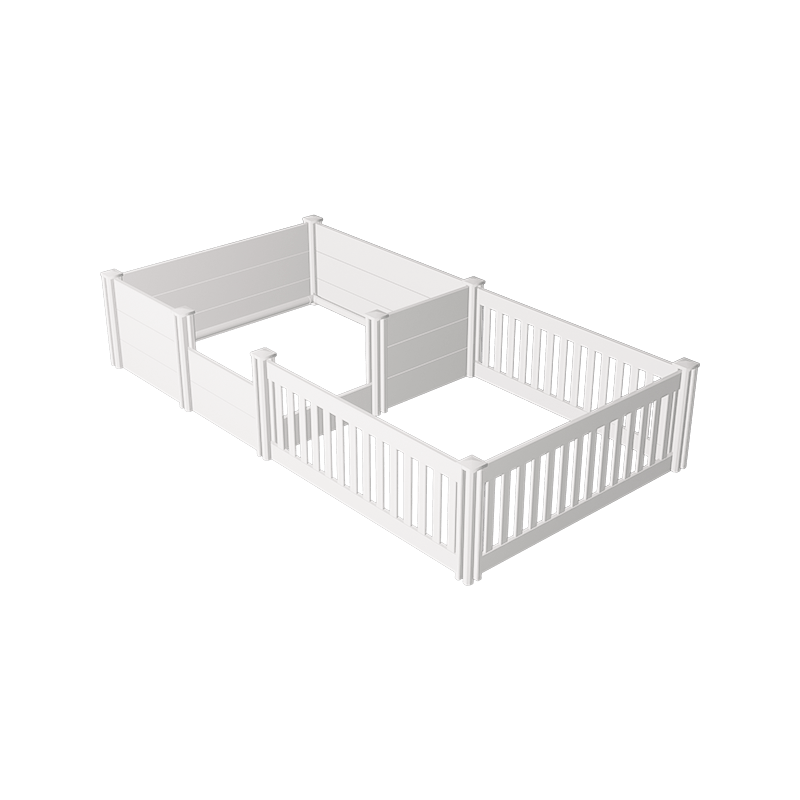 +86-572-8086381 / 8282992
+86-572-8086381 / 8282992  hzjfence1@hzjfence.com
hzjfence1@hzjfence.com  +86-572-8086381 / 8282992
+86-572-8086381 / 8282992  hzjfence1@hzjfence.com
hzjfence1@hzjfence.com 
Feb 05, 2025
1. Planning the Installation
Before you begin the installation of your PVC pet fence, careful planning is essential. The first step is to evaluate the layout of your property and determine the boundaries where the fence will be placed. Take measurements to ensure you purchase the correct amount of fencing material and posts. Consider whether you will need any additional features, such as gates or decorative elements.
It's also important to check with your local authorities to see if there are any zoning laws or regulations regarding fence height, placement, or materials. This will ensure that your installation complies with local building codes.
2. Preparing the Ground
Preparing the ground for your PVC pet fence is a crucial step in ensuring the fence remains stable and secure. Start by clearing the area of any obstacles such as rocks, tree roots, or debris. Use a shovel to level the ground, ensuring that the area where the posts will be placed is flat. This helps prevent the posts from leaning or shifting over time.
If your yard has uneven terrain, you may need to use a fence leveler or adjust the height of the posts during installation to maintain an even line.
3. Installation Process
Once the ground is prepped, you can begin installing the posts and panels. Most PVC pet fences come with detailed instructions, but generally, the process involves digging holes for the posts, setting the posts in concrete, and attaching the fence panels.
Post Installation: The posts are the backbone of the fence, so it’s crucial to place them securely. Dig holes that are deep enough to ensure the posts remain upright and stable. After setting the posts, use concrete to fill the holes and allow the concrete to set before attaching the panels.
Panel Attachment: Once the posts are set, attach the PVC panels to the posts using the provided fasteners or brackets. Most PVC fences are designed with interlocking panels, making it easy to install them in sequence.
Gate Installation: If you are including a gate in your fence, make sure it is installed properly to allow easy access while maintaining security. Double-check the alignment and functionality of the gate to ensure it opens and closes smoothly.

4. Routine Maintenance Tips
While PVC pet fences are known for their low maintenance, periodic upkeep will help preserve their appearance and functionality.
Cleaning: Occasionally clean your fence to remove dirt, mold, or debris. A simple cleaning solution of soap and water is often sufficient, but for tougher stains, a non-abrasive cleaner can be used. Avoid using harsh chemicals, as they may damage the PVC material.
Inspecting for Damage: Regularly inspect the fence for any signs of damage or wear, such as cracks, loose panels, or shifting posts. Although PVC is highly durable, it can become damaged in extreme conditions, so it's important to address any issues early to avoid further problems.
Check Gate Mechanism: Over time, the gate mechanism may loosen or become misaligned. Periodically check the hinges, locks, and fasteners to ensure the gate operates properly.
Reinforcing Posts: If you notice any leaning or shifting of the posts, reinforce them by adding more concrete around the base or adjusting the post’s alignment. This will help keep your fence stable over time.
5. Seasonal Considerations
Seasonal changes can affect the condition of your PVC fence, especially in areas with extreme temperatures. While PVC is resistant to heat and cold, it’s a good idea to check for any seasonal damage, such as shifting due to frost or heat-related expansion. A quick inspection before and after the harsher seasons will help keep your fence in prime condition.